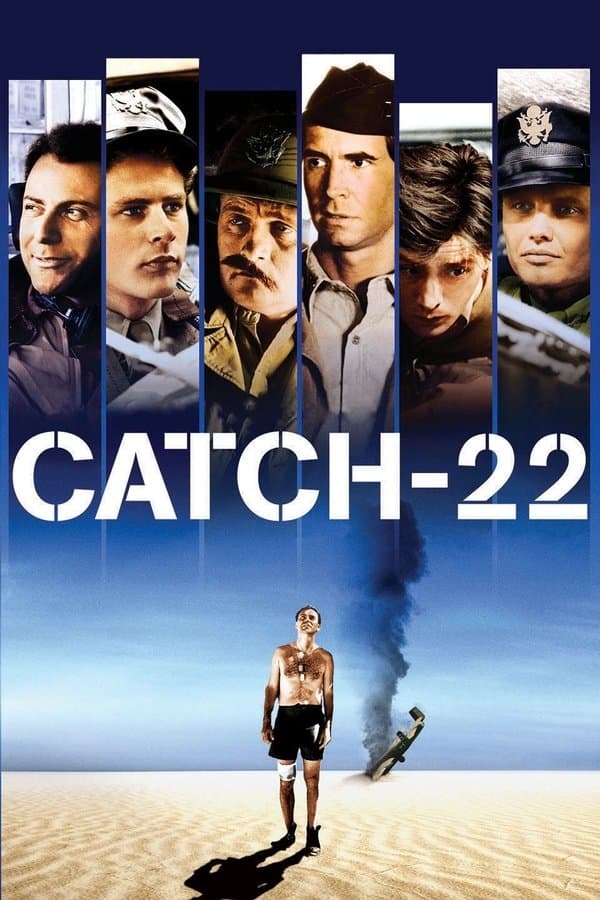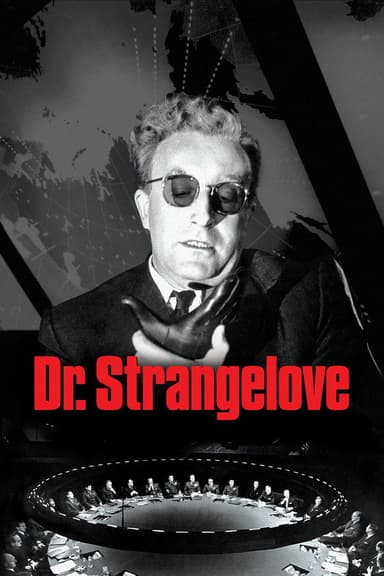
Catch-22
1970 • Comedy, War • R
A WWII military pilot makes a valiant effort to be certified insane in order to be excused from flying missions. But there's a catch.
Runtime: 2h 1m
Why you should read the novel
Joseph Heller’s 'Catch-22' immerses readers in the mind-bending world of WWII bomber pilot Yossarian with a depth and complexity no film can replicate. Heller’s prose masterfully captures the insanity and paradoxes of military bureaucracy, blending razor-sharp satire and psychological insight on every page. The layered structure, nonlinear storytelling, and rich character development invite readers to return again and again, each visit yielding new discoveries about war, authority, and the human spirit.
Far more expansive than the film, the novel offers complete access to Yossarian’s thoughts, fears, and motivations, allowing readers to experience firsthand the growing sense of absurdity and helplessness. Subplots and minor characters receive detailed attention, revealing the intricate web of madness that surrounds the protagonist. Through Heller’s unique voice, the book explores themes of mortality, freedom, and resistance in ways that elude cinematic shortcuts.
Reading 'Catch-22' is a transformative journey that challenges, provokes, and entertains. For those seeking to understand the enduring cultural impact of Heller’s masterpiece or to savor the full complexity of its tragicomic vision, nothing substitutes the novel. It remains one of literature’s most inventive and influential anti-war statements, inviting readers to question not only war but the paradoxes of everyday life.
Adaptation differences
The 1970 film adaptation of 'Catch-22' compresses the sprawling narrative of Joseph Heller’s novel, focusing more tightly on a smaller subset of characters and storylines. Many of the book’s minor characters, such as Clevinger and Major Major’s father, are omitted or given drastically reduced roles. Consequently, subplots central to the novel’s development and emotional resonance are either condensed or left out entirely, affecting the depth and breadth of the story.
Heller’s novel employs a nonlinear, circular storytelling style, frequently jumping in time and perspective to reflect the chaos and absurdity of war. The film adopts a more linear narrative under Mike Nichols’ direction, simplifying the chronology for clarity and pacing. This change results in a more straightforward plot but loses much of the original’s fractured, disorienting experience and the interplay of motifs that reward careful readers.
Another significant difference lies in the tone and delivery of satire. The novel is dense with ironic humor, internal monologues, and philosophical reflection, providing insight into the characters’ motivations and the deeper themes of mortality and institutional madness. The film, while darkly comedic, focuses more on visual and situational humor and leans into broader absurdity, sometimes sacrificing the subtlety and profound sense of dread that permeates Heller’s writing.
Finally, certain thematic elements receive less attention or a different emphasis in the film. For example, the book’s critique of capitalism and exploitation, particularly through characters like Milo Minderbinder, is presented in a more superficial or comedic light. Complex moral ambiguities and psychological struggles are more vividly articulated in the book, where readers can linger on language and repetition, while the film, limited by time and format, often moves briskly from one episode to another, making for a different overall impact.
Catch-22 inspired from
Catch-22
by Joseph Heller






